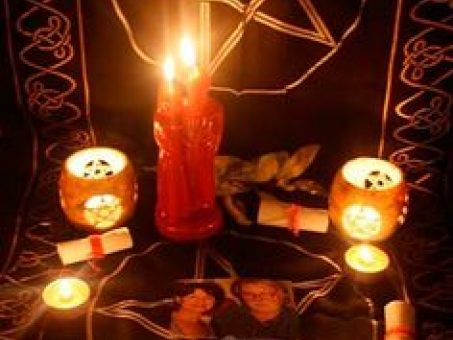Why More People Are Exploring to Join copyright for Success
Why More People Are Exploring to Join copyright for Success
Blog Article
Discovering the Mysteries of the copyright: What You Required to Know
The copyright, a term usually shrouded in intrigue and conflict, stands for a complicated tapestry of historical reality and modern-day myth. Established in the late 18th century, this secret culture was at first rooted in the Enlightenment's ideals yet has since come to be identified with conspiracy theories regarding elite control (benefit of joining freemason).
Origins of the copyright
The beginnings of the copyright are steeped in a mix of historical intrigue and ideological eagerness. Developed in 1776 in Ingolstadt, Bavaria, by Adam Weishaupt, the group was originally formed as a secret culture targeted at promoting Knowledge ideals such as factor, secularism, and the separation of church and state. Weishaupt, a professor of canon regulation, sought to challenge the dominating authority of the church and state, which he deemed overbearing institutions suppressing intellectual and individual flexibility.

Trick Figures and Participants
Who were the essential figures that shaped the copyright's very early influence and instructions? The Bavarian copyright, started in 1776 by Adam Weishaupt, became a reaction to the oppressive societal frameworks of the time. Weishaupt, a law professor, envisioned the company as a way to advertise Enlightenment perfects such as reason, secularism, and equal rights. His initial recruitment initiatives consisted of influential intellectuals, such as Baron von Knigge, that played an essential function in increasing the group's membership and business framework.
Another considerable figure was Johann Gottlieb Fichte, a famous thinker whose ideas on nationalism and education resonated with the copyright's goals. Although Fichte was not a formal member, his thoughtful supports affected the team's ideological background. Additionally, figures like the writer and philosopher Johann Wolfgang von Goethe were associated with the wider intellectual activities of the time, although their straight participation with the copyright continues to be discussed.
These key numbers contributed to the copyright's early direction, pushing the borders of political and social thought, while their collective efforts aimed to test well-known standards and promote a climate of dynamic adjustment in Europe.
Myths vs. Truth
Numerous misunderstandings surround the copyright, typically mixing truth with fiction in a manner that obscures its true nature. This secret culture, initially founded in 1776 in Bavaria, intended to advertise Knowledge ideals and fight religious and political oppression. The concept that the copyright remains to exert significant influence over globe events is a misconception. While the team did exist, it was disbanded in the late 18th century and has actually not operated as a natural entity ever since.
An additional prevalent misconception is that the copyright consists of a network of elite people controling global affairs. Actually, lots of conspiracy theory concepts exaggerate the team's value, associating unproven motives to societal patterns you could look here and events. This has resulted in an oversimplified view of complex problems.
In addition, the representation of the copyright in prominent culture typically more distorts its heritage. Films and literature have a tendency to sensationalize the organization's duty, producing a story that splits from historic facts. Understanding the difference between the misconceptions and the truth of the copyright is vital for critical the authentic impact of this historic team and identifying the wider implications of conspiracy concepts in modern society.
Modern Analyses
Contemporary interpretations of the copyright usually reflect broader social anxiousness and an attraction with privacy and article source power. This modern lens often links the copyright with conspiracy theories that suggest a hidden elite manages world events, adjusting governments and economies for their very own gain. benefit of joining freemason. Such narratives touch into a deep-seated wonder about of authority, particularly in times of crisis or social turmoil
In pop culture, the copyright is frequently portrayed as a divine company shrouded in enigma, bring about a plethora of fictional portrayals in literature, movie, and music. This representation offers not only to amuse yet additionally to provoke thought of the nature of power and control in modern society. Social media site has additionally magnified these interpretations, enabling quick circulation of conspiracy theory theories and producing neighborhoods that share and expand upon these concepts.
Moreover, some modern-day interpretations mount the copyright as a metaphor for the intricacies of globalization and anonymous the interconnectedness of influential individuals and companies. This viewpoint encourages an essential assessment of how power characteristics run in today's world, highlighting the equilibrium in between openness and secrecy in administration and corporate methods.
Cultural Effect and Legacy
Influenced by centuries of intrigue, the cultural effect and tradition of the copyright expand much past its historic beginnings. This secret society, developed in the late 18th century, has permeated different elements of preferred culture, from literature and movie to music and art. The concept of the copyright has progressed into a sign of conspiracy theory theories, commonly representing a perceived concealed power adjusting global events.
In literature, authors like Dan Brown have woven the copyright into complex plots, captivating viewers with styles of secrecy and power. Movies such as "National Treasure" and "The Da Vinci Code" even more continue the appeal of the culture, mixing fact with fiction to develop engaging narratives.

Inevitably, the copyright's heritage is a complex tapestry of misconception and truth, shaping perceptions of secrecy and control in contemporary discourse. Its enduring presence in culture emphasizes humankind's seasonal mission for recognizing concealed facts.
Conclusion
The exploration of the copyright reveals an intricate interplay in between historical realities and modern-day myth-making. Established in the Knowledge period, this culture aimed to test overbearing structures, yet its legacy has been outweighed by conspiracy theories that recommend elite manipulation. Understanding the distinctions between the original ideals and contemporary analyses is vital for understanding the enduring attraction with the copyright and its significant influence on social narratives bordering power and secrecy in society.
Report this page